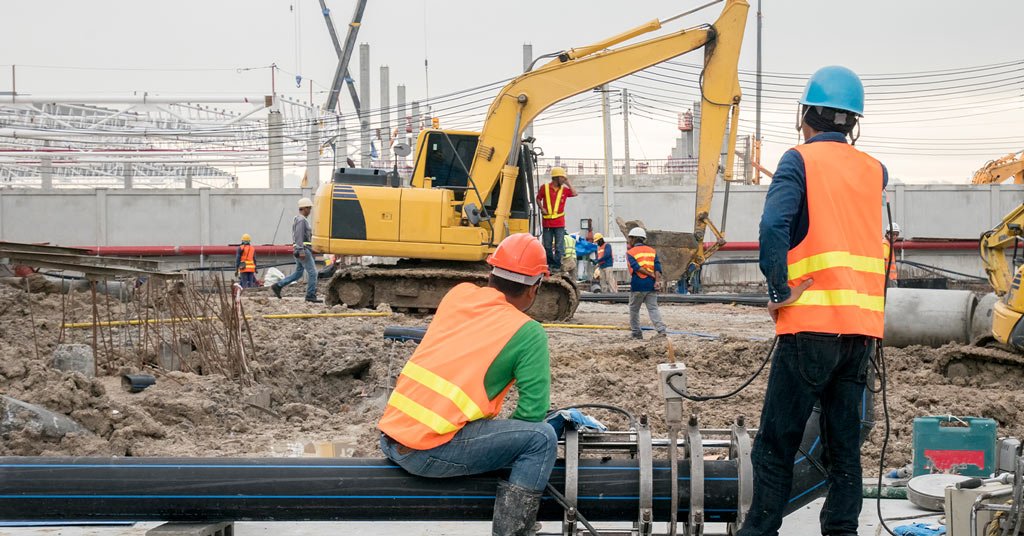Construction activities, like demolition, blasting, piling, and compaction, frequently generate extensive vibrations that can unfavorably affect structure safety, human comfort, and equipment functionality.
This is why vibration analysis is commonly carried out by data recorded from vibration monitoring systems used to study the impact of vibration on the surrounding during the construction period.
In this blog post, we will focus on how construction activities can be made safer and more secure by employing vibration analysis.
Notable Vibration Monitoring Methods
Traditional vibration monitoring systems are associated with limitations such as expensive devices, complicated setups, and complex operating mechanisms. Some monitoring systems have built-in remote data transmission, processing, and access facility.
Recent information and technology advances are used to develop and create a promising alternative to the traditional vibration monitoring system. Construction equipment operation, blasting, and traveling traffic can generate vibration issues.
The potential construction damage includes superficial and structural deterioration caused by excavation and demolition activities or earth movement.
Besides, the movements can also affect sensitive equipment, including microelectronic manufacturing equipment, which is very sensitive to ground vibrations. Usually, the vibration amplitude of traffic is not high enough to cause damage to construction due to suspension systems and pneumatic tires.
On the other hand, railways and trains can also significantly impact vibrations, making it necessary to apply countermeasures. Particle displacement, velocity, and acceleration are used to describe ground vibration.
How is the Potential Damage Monitored?
The peak particle velocity is the most appropriate variable to assess the potential damage to a construction. Three components represent vibration amplitude: two horizontal components, transverse and longitudinal, and one vertical component, which generally has the highest amplitude and is easy to measure.
The duration and amplitude of the vibration change depend on the type of operation and equipment, ranging from a high amplitude and short-term to lower and longer characteristics, respectively.
The activities of the equipment can be classified as continuous, excavation, and vibratory compaction equipment, among others, and single impact with or without a high-rate repeated impact vibration, like a jackhammer or other similar breakers.
The maximum velocity component for construction vibration, peak particle velocity, is used as a descriptor of the wave effect.
Why is Construction Vibrational Analysis Essential?

Vibration analysis is very important for construction and helps predict the structure’s behavior under different load distributions.
In contrast, other equipment and processes, such as scientific laboratories, hospital operating theaters, and microelectronic operations, are highly susceptible to vibrations.
A constant increase in urbanization leads to increasing population and building density in metropolitan cities. Rapid construction activities put many nearby structures and facilities at risk by exposing them to intolerable ground-borne vibrations. Researchers and practitioners have studied the effects of such construction-induced vibrations for a long time.
A wide range of standards like Eurocodes, the International Organization for Standardization, and other national and regional standards are also available to direct and evaluate the impact of vibration on structures, facilities, and humans.
How Are the Side-effects of Construction-related Vibrations Measured?
Three vibration indicators are mainly applied to study the effects of construction-induced vibrations on the environment.
These include-
-
Peak particle velocity,
-
Root mean square velocity in the octave band
-
Root mean square acceleration in the octave bands.
Peak particle velocity is proportional to induced strain during the passage of ground-borne waves and is the most straightforward indicator of the risk of structural damage.
In general, peak particle velocity attenuates quickly with increasing distance from a vibration source.
How to Conduct Construction Vibration Analysis?
1. Using a cantilever beam
It is just one of the numerous methods for analyzing the vibration of unknown systems.
In order to analyze the vibrations of construction, we can use a cantilever beam instead of the construction itself. Therefore the process of analyzing is simplified.
2. Simple monitoring operations
It takes occasional measurements from concerned locations promptly. In general, the monitoring for vibrations on an ongoing construction site can vary from measurements taken at a single point to those measured simultaneously at multiple points.
3. Advanced monitoring techniques
In contrast, advanced monitoring methods include constant measurement with real-time data processing, remote data display, and automatic alarm functions. Contractors often turn to third-party vibration consultants or specialists for using highly specialized vibration monitoring devices.
4. Portable sensors
Portable sensors and user-friendly monitoring systems aid the on-site construction staff perform their daily chores. For selecting an appropriate sensor, one needs to consider the requirements of the monitoring applications.
5. Construction-induced vibration monitoring systems
In the case of most construction-related vibrations, a frequency range between 1 to 200 Hz is essential. So, based on the sampling theorem, a sampling rate greater than 400 Hz is preferred. The results collected and collated from the measurements are processed, and a comparison is drawn with pre-specified vibration standards.
For this reason, this system can acquire and process data on a real-time basis to allow contractors to study the vibration levels on a real-time scale and prepare for the negative impact of a potential occurrence.
6. Traditional tethered sensory systems
These are used to monitor many civil engineering structures in operational and extreme conditions.
However, their deployment is typically complicated and costly. Due to the maturity of microelectromechanical systems technology, wireless monitoring systems using microelectromechanical sensors are considered a viable alternative to the wired system.
7. Microelectromechanical system-based wireless sensors
These can integrate autonomous data acquisition, data processing algorithms, and wireless data transmission. Compared with wired systems, wireless sensors provide comparable functionality with a considerably lower price, smaller size, and easier installation.
The Takeaway
Identifying potential hazards to the surrounding structures due to ongoing construction activities is critically important.
Also, deploying and handling technological vibration monitoring devices and assessing the impact of vibration based on real-time readings can make a difference and bolster safety.
This is why Mechartés undertakes projects to maximize the safety of constructions by performing vibration analysis.
Our experienced consultants are adept at using technological vibration monitoring devices. They assess the impact of vibration based on real-time readings, create a database of vibration limits, and display it to users through graphic interfaces.
Moreover, an autonomous alarm is developed using built-in functions in the web interface. The pre-specified acceptable limits for the vibration indicators are set as threshold values. After exceeding vibration limits, various alarming signals are issued with a limited delay.
Contact our service advisors for more details.


 Share
Share  facebook
facebook